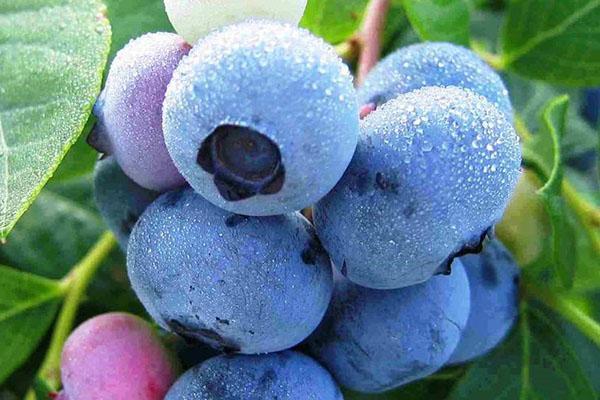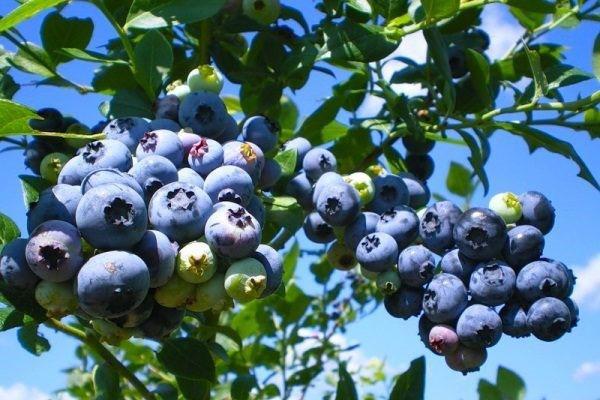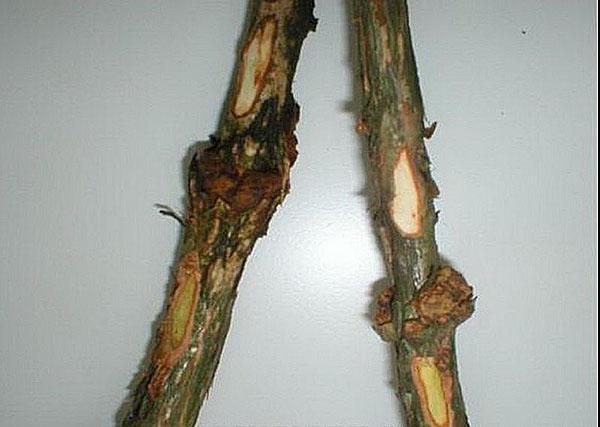How to detect and defeat blueberry diseases

Blueberry diseases can be of viral or fungal origin. They significantly affect the yield indicators and can cause irreparable harm to the plant. The fight against them is based on the use of pesticides - chemicals that destroy pathogens. It should be understood that diseases are contagious: infection of one bush leads to a lack of harvest in the entire planting.
Fungal diseases

Among blueberry diseases, the most common are those which are caused by fungal pathogens. They affect roots, stems or leaves. These pathologies are often called various rots or spots: the reproduction of the fungus is accompanied by the appearance of spots on the green parts of the plants, and in the future it may even lead to their death. All diseases are similar to each other, but they can be distinguished by some manifestations.
Many fungal diseases present with typical symptoms. If it is not possible to differentiate them, it is enough to treat with a broad-spectrum fungicide.
Stem cancer

Stem cancer (shoot burn) is one of the most common diseases. Initially, reddish spots appear on the shoots, which merge into large ones and are located on the branches in the form of a ring. As a result, first small and then large shoots die off. If blueberry leaves turn red long before the start of leaf fall, and red-brown spots appear on its bark, this indicates stem cancer. The following drugs are used for treatment: Topsin, Euparen, Bordeaux liquid.
Phomopsis

Phomopsis (Phomopsis drying of branches, defeat by Phomophsis fungus) - no less frequent disease. Young shoots dry out at the tops and curl, and the bark covered at first with small reddish, and then large brown spots. Infection starts from the tops, but then spreads to the entire plant. Vs Phomopsis, fungicides such as Topsin, Skor, Tridex and their analogues are effective.
Gray rot

Gray rot (botrytis fungus becomes the causative agent) - refers to a dangerous blueberry disease that affects all parts of the plant. First, yellow spots appear on the peel of the berries, then they rot completely, and the process spreads to the leaves and shoots. A characteristic feature is a thick gray bloom on the berries.
Systemic fungicides are used as control measures:
- Tersel;
- Signum;
- Euparen and others.
For prevention, autumn and spring processing of blueberries with preparations based on copper is useful.
Moniliosis of fetuses

Fruit moniliosis manifests itself not only on berries. at first fruits develop normally but then dry out quickly. Leaves and shoots of bushes covered with a bloom that resembles frost. The causative agent remains to winter in berries. The only method of struggle is to remove the affected shoots, it is also beneficial to treat blueberries with urea.
Physalosporosis

Physalosporosis - the first signs of the disease appear in the fall. Red spots appear on the bark, which gradually merge into large rings. Such shoots must be immediately removed and burned, and to destroy the pathogen Topsin or Fundalosis preparations are suitable.
White spot

White spot (septriosis) - its manifestations can be confused with symptoms of other fungal diseases. The spots are small at first, light brown with purple edging. Then they get big completely purple. The fight against disease includes preventive and emergency treatment with systemic fungicides.
Witch's broom

Witch's broom - this disease can be easily recognized by its characteristic featured. Reproduction of rust fungus causes rapid growth of short shoots in a certain area of the bush. They can be yellow or red, then dry up. The infection spreads quickly to neighboring plants. For the destruction of the pathogen, it is necessary to cut and burn the infected branches.
Viral diseases

Another reason why blueberries do not bloom and bear fruit, and the bushes wither, is a viral infection. It spreads as quickly as fungal pathogens, covering the entire planting.
Among the most common diseases of a viral nature are the following:
- mycoplasmosis (dwarfism) - manifested by a decrease in yield and rapid drying of leaves, at the beginning of autumn they begin to blush quickly;
- filamentous branches - leaves wrinkle with this disease, and stripes resembling threads appear on young shoots;
- mosaic - yellow streaks appear on the leaves, and the tips remain green;
- red ring spot - red spots in the form of a ring appear first on old leaves, and then on the entire bush.
Viral diseases are more dangerous for blueberries. It is almost impossible to destroy the pathogen, therefore all measures are aimed at preventing infection of other plants. The bushes must be carefully removed by the root and burned.
Deficit trace elements

The amount of nutrients in the soil also affects the health of blueberries. Plants can suffer from hypovitaminosis, a decrease in the amount of micro and macro elements. When they appear, it is enough to replenish the level of the deficient substance, and the condition of the bushes will gradually return to normal.
Such diseases can manifest themselves with characteristic symptoms:
- lack of nitrogen is the reason for the appearance of yellow leaves in blueberries with a red tint;
- phosphorus - the leaves turn bright red, begin to grow parallel to the shoots;
- calcium - a yellow border appears on the leaves;
- potassium - the tops of leaves and branches gradually turn black and fall off;
- magnesium - the tips of the leaves become red;
- bora - leaves turn blue, practically do not grow;
- gland - yellow leaves with bright green stains;
- sulfur - blanching of green parts of plants.
Blueberries, like most cultivated plants, need preventive treatments with pesticides, fungicides, as well as regular application fertilizers... In such conditions, the bushes grow large and bear fruit well. It is worth remembering that a low level of productivity in young plants is normal if it is not accompanied by signs of fungal diseases or the appearance of pests. A good harvest can be obtained only from those bushes that have reached 5-6 years of age.